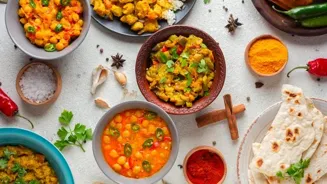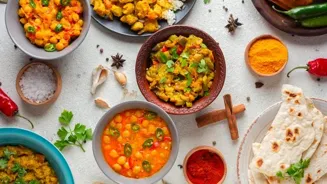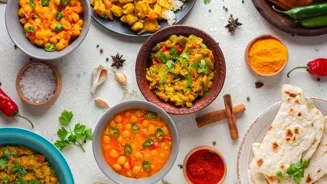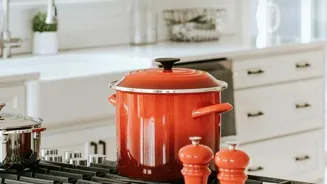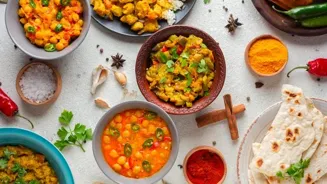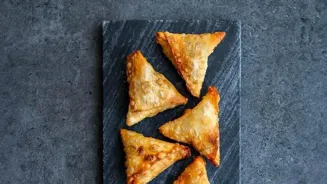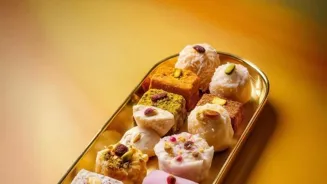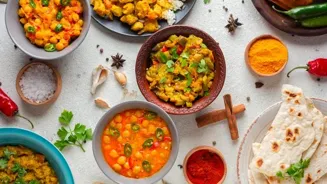Unravel the Secrets of Perfect Indian Chaat! Dive into a world of vibrant flavors and textures. Create your street food magic
India is famous for its street food, and chaat is definitely the king of the street.
From the spicy pani puri to the tangy bhel puri, chaat is a symphony of flavors and textures that explode in your mouth. Every bite is a party, a celebration of Indian spices and culinary traditions.
Learning to make chaat at home is like unlocking a secret to deliciousness, allowing you to bring the vibrant street food culture into your own kitchen.
It's not just about following a recipe, it's about understanding the principles of balancing sweet, sour, spicy, and savory elements to create a harmonious and irresistible dish. This guide will help you navigate the exciting world of Indian chaat and empower you to create your own perfect plate.
The essence of delicious chaat: base, chutneys, spices
The heart of any good chaat lies in its foundational elements: the crispy base, the tangy chutneys, and the sprinkle of spices. First, consider your base. Options abound, from the crunchy puri used in pani puri and sev puri to the crispy fried potato patties (aloo tikki) popular in North India.
You can even use samosas for a unique chaat experience. Next, comes the chutneys. These are the real flavor powerhouses. A sweet tamarind chutney adds a deep, molasses-like sweetness, while a vibrant green coriander-mint chutney brings a fresh, herbaceous tang.
A spicy garlic chutney can add an extra kick for those who like it hot. Balancing these chutneys is crucial. The sweet chutney should complement, not overpower, the spicy and tangy elements. The green chutney should be bright and refreshing, cutting through the richness of the other ingredients.
Finally, don't underestimate the power of spices. Chaat masala, a blend of roasted cumin, coriander, dried mango powder, and black salt, is the quintessential chaat spice. A sprinkle of red chili powder can add extra heat, while roasted cumin powder adds a smoky depth.
Pani Puri vs. Sev Puri: A Tale of Indian Snack Contrasts
Pani Puri, often called Gol Gappa, is a very common snack. The crispy puri, a small, hollow, fried sphere, requires perfect balance. Too thick, and it won't be crispy; too thin, and it will crumble. The fillings matter but the water is king. This spiced water has mint coriander and tamarind.
This all makes it fresh and spicy. The process of making perfect Pani Puri is all about adjusting the tastes. Then, dip it in. Sev Puri shows India's resourcefulness with food. It uses the same tiny pooris but piles on ingredients.
Diced potatoes, onions, tomatoes, and both chutneys add different tastes. Sprinkling lots of fine sev (crispy chickpea noodles) on top adds crunch. Sev Puri is all about layers: the smooth potatoes, the crisp onions, the sharp tomatoes, the cool chutneys, and the crunchy sev.
This party of layers and tastes is very good and makes people want to eat more. To have the perfect Sev puri the base and topping should be in a perfect mix.
Bhel Puri is light, spicy, and customizable; Aloo Tikki is crispy outside, soft inside
Bhel Puri is a light but still tastes spicy. It uses puffed rice (bhel) as its base, making it lighter than other chaats. Bhel Puri contains onions, tomatoes, and potatoes and the right spice. The main spice if tamarind chutney which is very important in Bhel Puri.
It brings spice, flavor and balances everything well. A good thing of Bhel Puri is that you can make it instantly and easily. It allows you to experiment. People add green mango to make it sharper. You can add peanuts. Aloo Tikki is another popular street food.
The Aloo tikki, made from boiled potatoes, are flattened into patties, shallow-fried until golden brown and crisp. The tikkis are typically served topped with yogurt, chutneys, and spices. Creating the perfect aloo tikki relies on mastering the texture.
The tikki should be crispy on the outside and soft on the inside. Adding a binding agent like cornflour or breadcrumbs helps prevent the tikki from falling apart during frying. Grating some ginger and green chilies into the potato mixture adds a subtle heat.
Enhance chaat with diverse ingredients for unique flavors and textures
Beyond the classic chutneys and spices are other ingredients that can add unique dimensions to your chaat. Pomegranate seeds offer a burst of juicy sweetness and a beautiful pop of color. Roasted peanuts provide a satisfying crunch and a nutty flavor.
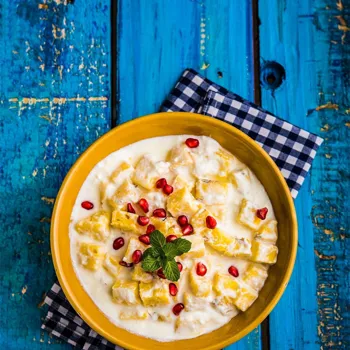
Finely chopped cilantro adds a fresh, herby aroma. Yogurt can be drizzled over chaat to add a cooling element and a creamy texture. Grated carrots or beetroot can add a touch of sweetness and a vibrant color. Sprouted lentils add a boost of protein and a slightly earthy flavor.
The key is to experiment and find combinations that delight your own taste buds. Don't be afraid to try unexpected pairings. For example, adding a few drops of lemon juice can brighten up the flavors and balance the sweetness of the tamarind chutney.
A pinch of black salt can add a unique savory note.
Making chaat at home connects you to Indian culinary traditions
Making chaat at home is not only delicious but also a great way to connect with Indian culinary traditions. It's a fun activity to do with family and friends, allowing everyone to customize their own chaat according to their preferences.
You can adjust the spice level, tailor the fillings, and experiment with different combinations of chutneys and spices. Chaat is also a wonderful way to use up leftover ingredients. Leftover boiled potatoes, vegetables, or even samosas can be transformed into a delicious chaat.
When making chaat at home, remember that freshness is key. Use fresh ingredients for the best flavor. Make the chutneys in small batches to ensure that they retain their vibrant colors and flavors. Store the chutneys in airtight containers in the refrigerator to keep them fresh for several days.
And most importantly, have fun and experiment! The best chaat is the one that you create yourself, tailored to your own unique taste.
Discover the art of making Indian chaat with ease and creativity
The beauty of Indian chaat lies in its simplicity and adaptability. It's a celebration of everyday ingredients transformed into something extraordinary through the skillful balancing of flavors and textures. Don't be intimidated by long ingredient lists or complicated recipes.
Start with the basics, master the core elements, and then let your creativity flow. With a little practice, you'll be crafting chaat that rivals your favorite street vendor in no time.
So gather your ingredients, sharpen your knives, and get ready to embark on a culinary adventure into the vibrant world of Indian street food.
Whether you're craving the tangy spice of pani puri or the layered flavors of bhel puri, this guide will empower you to create your own perfect plate of Indian chaat.
AI Generated Content. Glance/InMobi shall have no liability for the content